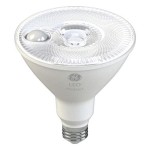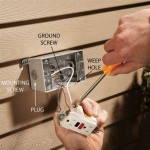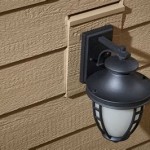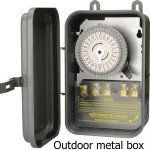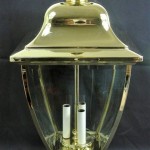Replacement Solar Panel For Outdoor Lights
Outdoor solar lights offer a convenient and eco-friendly way to illuminate pathways, gardens, and other outdoor spaces. These lights rely on solar panels to convert sunlight into electricity, which is then stored in a battery to power the light after dark. Over time, solar panels can degrade or become damaged, reducing their efficiency and impacting the performance of the lights. Replacing the solar panel is often a simple and cost-effective solution to restore the lights to their full brightness.
Identifying the Need for a Replacement Solar Panel
Several signs indicate a failing solar panel. Dim lights, even after a full day of sun exposure, are a primary indicator. Lights that flicker or fail to turn on at all may also point to a faulty panel. Physical damage, such as cracks or discoloration on the panel's surface, can also significantly reduce its ability to convert sunlight. Finally, if the battery is consistently failing to charge, even after replacement, the solar panel itself may be the culprit.
Choosing the Right Replacement Solar Panel
Selecting the correct replacement panel involves considering several factors. The voltage and current output of the panel are crucial; these specifications should match the original panel or be compatible with the light's battery and LED. The physical dimensions of the panel are also important to ensure it fits the existing light fixture. Panel material, typically monocrystalline or polycrystalline silicon, influences efficiency and durability. Considering the climate and typical sunlight exposure helps in choosing a panel that will perform optimally in the given environment.
Types of Replacement Solar Panels
Replacement solar panels for outdoor lights are available in various types and configurations. Small, individual panels designed to replace those on specific light models are common. Larger panels with multiple output connections can power multiple lights simultaneously. Some panels come pre-wired with connectors for easy installation, while others require soldering or crimping. Flexible and adjustable panels offer versatility in positioning for optimal sunlight capture.
The Replacement Process
Replacing a solar panel is generally a straightforward process. The first step is to disconnect the old panel from the light fixture. This typically involves unclipping or unscrewing the panel from the light housing. Next, the wires connecting the old panel to the light's internal circuitry or battery need to be disconnected. Most connections use simple connectors that can be detached easily. The new panel is then connected to the light fixture, ensuring the polarity of the wires matches the original configuration. Finally, the panel is secured to the light fixture, and the functionality of the light is tested.
Troubleshooting Common Issues
Several issues can arise during or after the replacement process. If the light still doesn't function correctly after panel replacement, check the connections for proper polarity and secure attachment. Ensure the battery is fully charged or consider replacing it if it's old or damaged. Verify the new panel's voltage and current output are compatible with the light's specifications. If the light still doesn't work, it might indicate an issue with the light's internal circuitry, which may require further troubleshooting or replacement of the entire unit.
Maintaining the New Solar Panel
Proper maintenance can extend the lifespan of the replacement solar panel. Regular cleaning of the panel’s surface with a soft cloth and water removes dust and debris that can obstruct sunlight absorption. Ensuring the panel is positioned for optimal sunlight exposure throughout the day maximizes its efficiency. Inspecting the panel periodically for damage, such as cracks or loose connections, helps prevent further issues. Protecting the panel from extreme weather conditions, such as heavy snow or hail, also contributes to its longevity.
Cost Considerations and Return on Investment
Replacing a solar panel is often significantly less expensive than replacing the entire light fixture. The cost of replacement panels varies depending on factors such as size, material, and brand. The energy savings from using solar lights, coupled with the extended lifespan provided by a new panel, often result in a positive return on investment over time. By replacing only the panel, users contribute to sustainability by minimizing electronic waste.

Solar Lights Replacement Top Panel Lantern Lid Led Lamps Battery Box Garden Light 2pcs Black Fruugo Tr

Replacement Solar Panel For Deckorators Post Caps 2pk

Brightech Ambience Pro Solar 27ft Powered Outdoor String Lights Commercial Grade Bundled With One Extra Replacement Panel Yahoo Ping

Yaju Solar Lantern Top Replacement Led Light Parts Panel Lid Bulb Accessories Battery Box For Outdoor Hanging L Fruugo Tr

Replacement Solar Panel Lumify 100 Leds

Goodfoever 2 Pack Solar Light Replacement Top For Outdoor Fence And Wall

Solar Light Replacement Top Waterproof Panel Lantern Lid Lights With Bulbs For Outdoor Hanging Lanterns Table Garden Patio Decor

2 Pieces Replacement Top Solar Lantern Light Panel Cover With Led Bulb Diy For Outdoor Garden Decor

2pcs Solar Lantern Light Replacement Top With 30 Led String Panel Lid Round Lights Part For Watering Can Outdoor Hanging Lanterns Com

Replacement Solar Light Tops Outdoor Hanging Lantern Parts Round Lights Waterproof Decorative For Lanterns Temu

